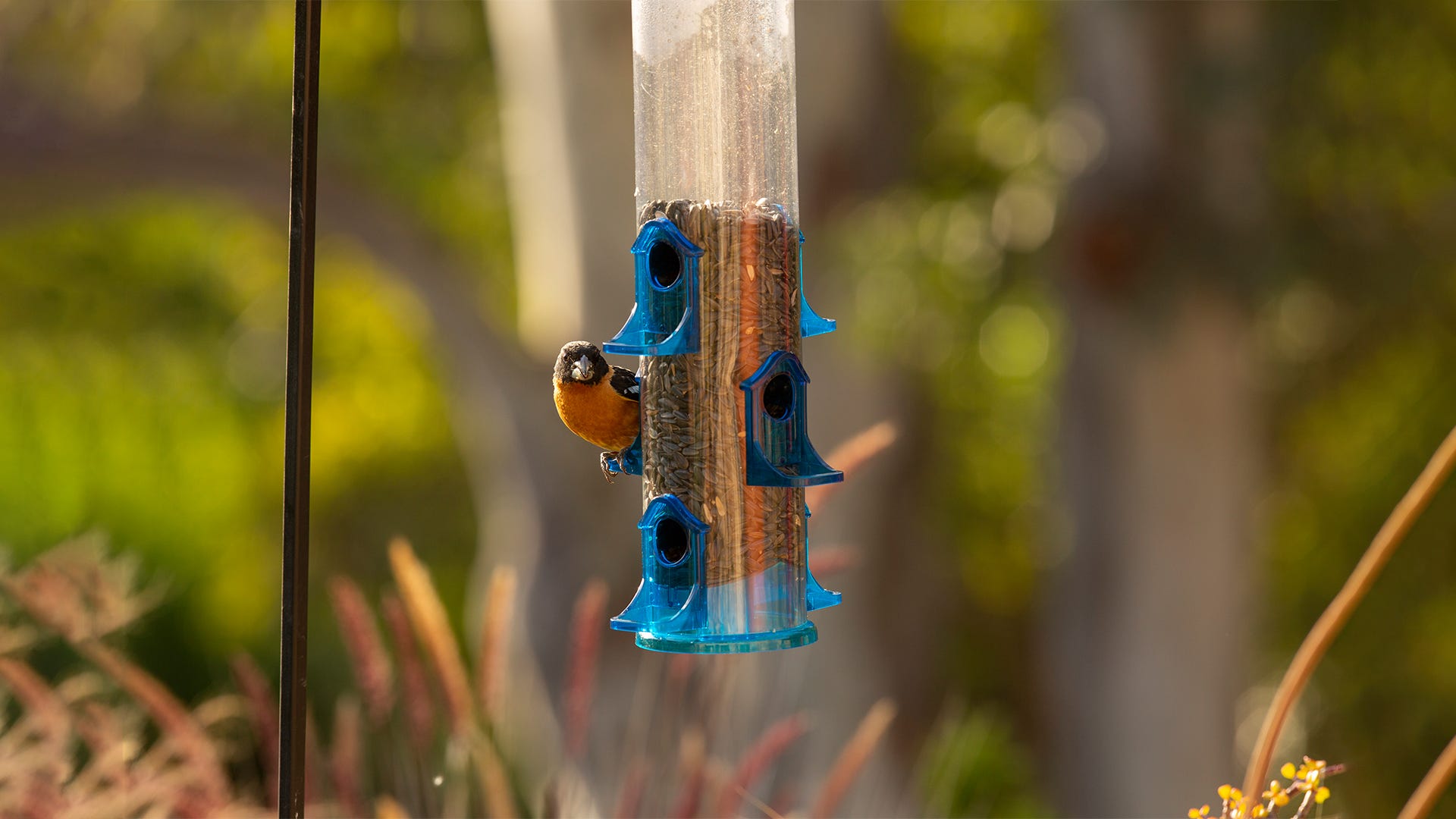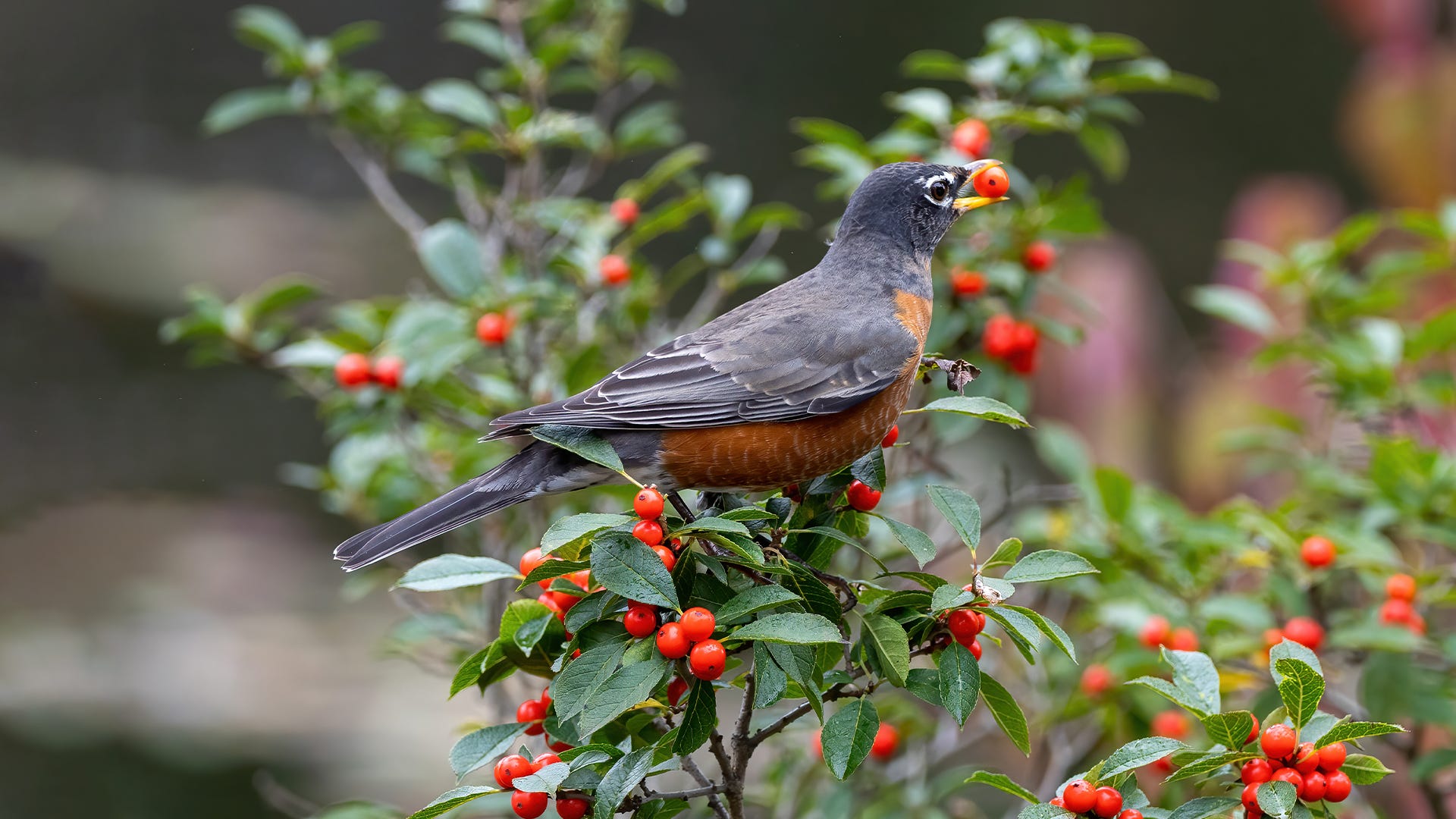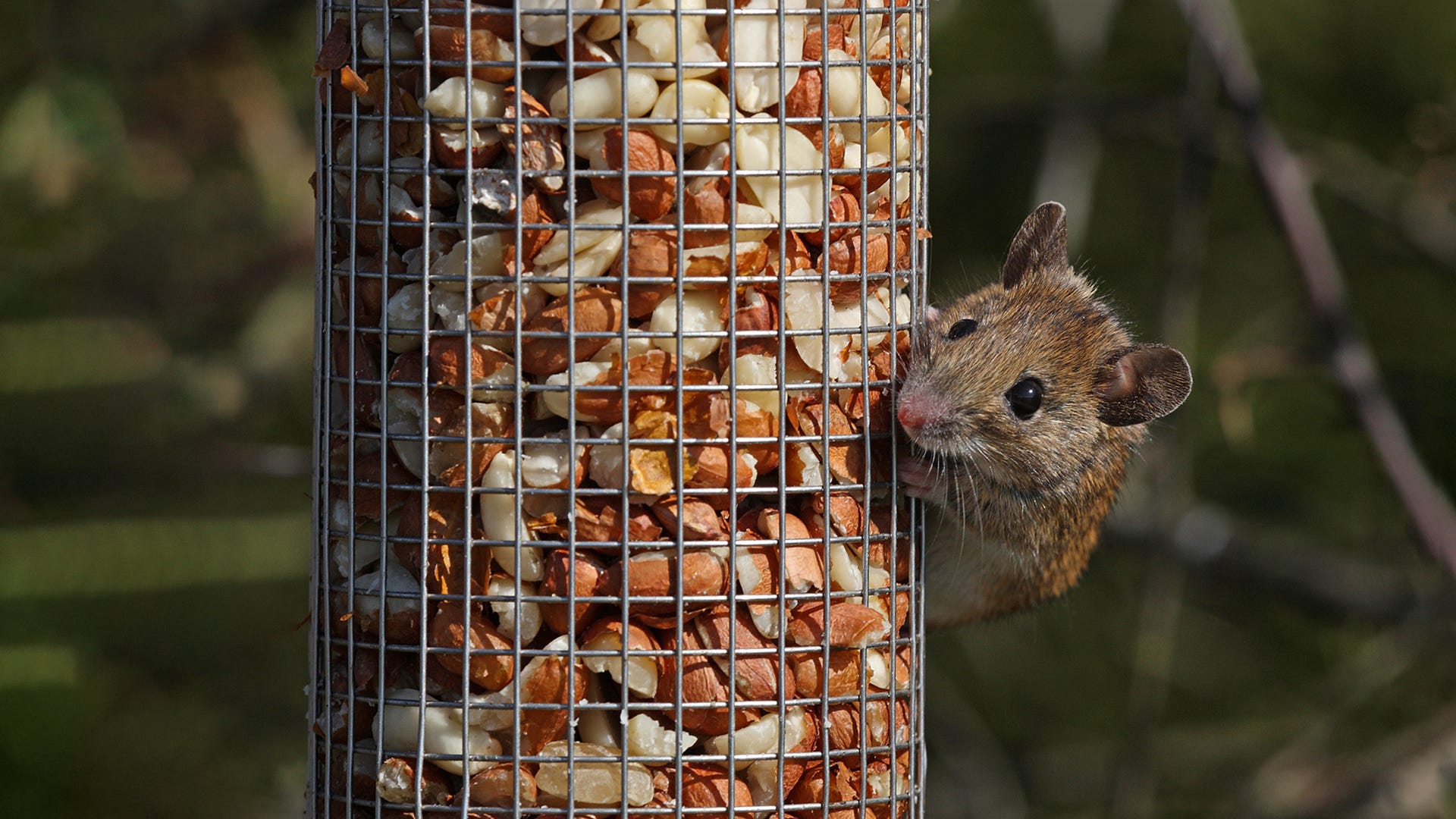
Usually the question that bird lovers ask is how to keep squirrels out of bird feeders. But another equally legitimate question is how to keep mice, rats, and chipmunks out of bird feeders. Fortunately, the answer to how to stop squirrels is generally the answer to how to stop these other animals.
Use a Squirrel Baffle
A squirrel baffle is designed to keep squirrels from climbing up a metal bird feeder pole, and it works for other critters too.
The trick when using a squirrel baffle is to make sure that when you hang it, the top of the baffle is at least five feet from the ground. It also needs to be 10 feet from anything a squirrel could use as a launching pad (tree, roof, etc.)
I've seen bird poles in gardens that owners have made from 4'x4' wood posts. I don't recommend these if you have a rodent problem. Wooden posts are much easier to climb than a smooth metal pole.
See also: Baffle the Squirrels at Your Bird FeederUse a Covered Bird Feeder or Weather Guard
Weather guards come in several sizes and are plastic domes for bird feeders. They are meant to keep birdseed sheltered from rain and snow, but they're also effective in keep mice, rats and chipmunks off your feeders, too. Ask your local wild bird store owner for a weather guard or squirrel dome and they'll know what you need.
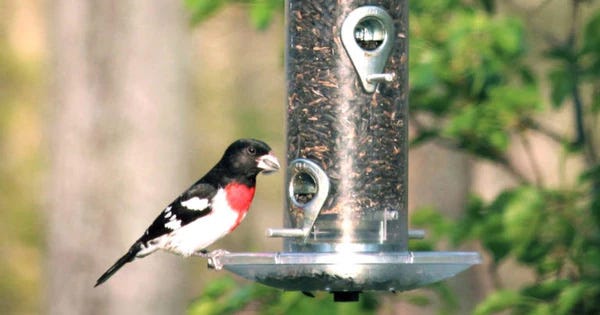
One of the Best Deterrents is a Seed Tray
The draw to bird feeders is, of course, the seed. Mice, rats, squirrels, and chipmunks will rummage through seed that has fallen or been thrown aside by birds feeding at your feeder. A seed tray attached to the bottom of your feeder will catch this seed.
Seed trays will prevent seeds, nuts, and fruits from landing on the ground as waste. They will also prevent dropped food from rotting and breeding bacteria.
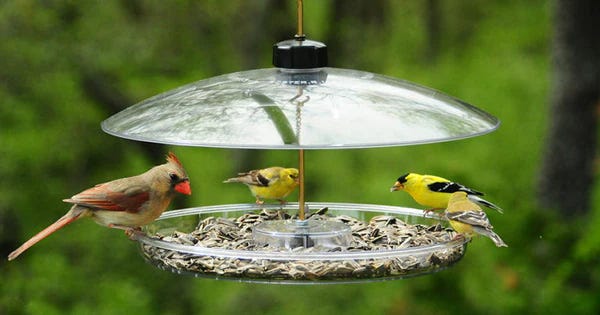
Avoid Using Platform Trays for Feeding Birds (If You Have a Rodent Problem)
Birds like mourning doves, juncos, and grosbeaks are big fans of these feeders. Unfortunately, so are mice, rats, squirrels, and chipmunks.
Platform feeders are open trays that allow the easiest access to whatever food you place in them. Some of them are built to be hung, but many of them are intended to feed birds that prefer to eat at ground level. Those for the ground are built with legs meant to stabilize them in lawns and on other surfaces.
See also: How to Keep Chipmunks Out of Bird FeedersDon't Completely Fill Feeders
The less access to birdseed rodents have the better. Extra-large bird feeders that hold multiple quarts of birdseed aren't always your best choice. Not only is the seed vulnerable to the weather, but the longer it is out there the more opportunity mice and their friends have to find it.
I prefer to fill my medium-sized feeders about the-thirds of the way. Depending on the number of guests that come to lunch and stay for dinner, the seed is generally eaten in two or three days.
Use Covered Metal or Strong Plastic Bins to Store Seed
Metal or strong plastic bins are best because mice, rats, and the crowds the run with won't be able to chew through them. Keep it outside, preferably in a shed, so you don't invite rodents into your home.
There's One Thing You Definitely Do Not Want to Do
You don't want to install a PVC pipe bird feeder pole, or any pole for that matter, and then spread petroleum jelly, grease, or oil on it. These substances will get on the animals' paws. They'll attempt to lick it off, and if they don't outright kill them, will make them extremely sick.
See also: How to Successfully Squirrel-Proof Your Bird Feeders





